Archive for the ‘Featured’ Category
Sunday, January 10th, 2016
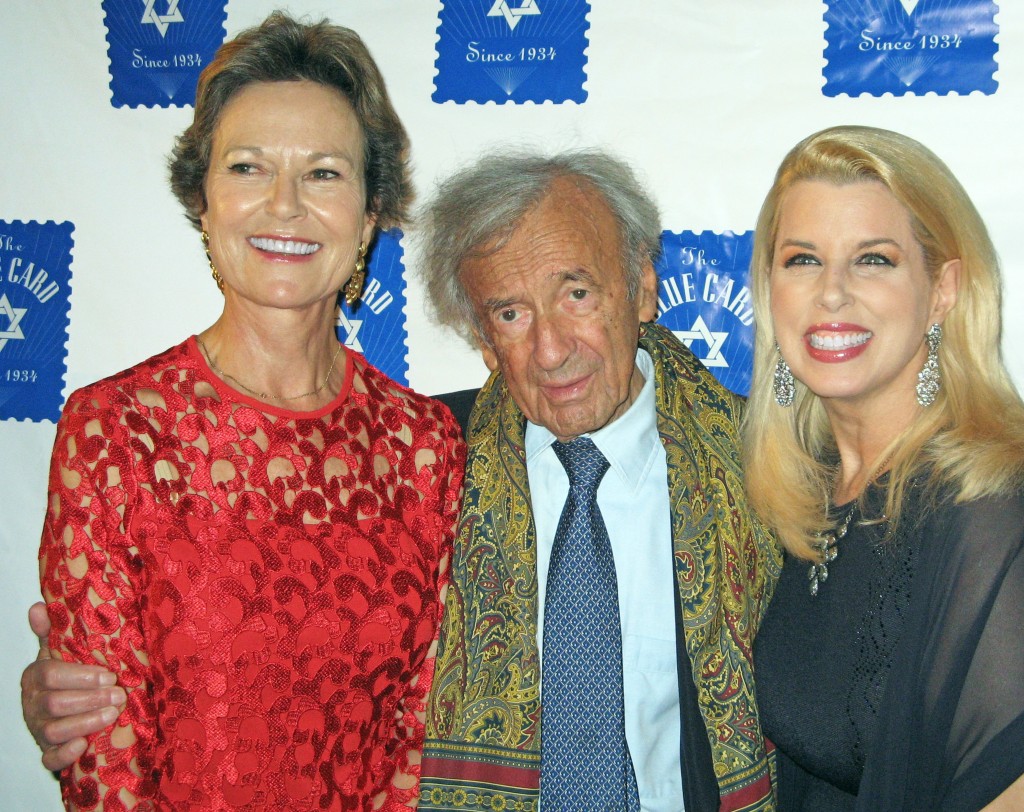
Elie Wiesel, 87, looks very dark-skinned for January (like an Indian really – could it be makeup meant to make him look healthier?) and also small standing between Kati Marton (left), who helped present the award, and Rita Cosby, whose role at the event was not mentioned
By Carolyn Yeager
Fake Auschwitz survivor Elie Wiesel is never too busy or too ill to show up for another award handed out by his Jewish friends. The 87-year old Wiesel appeared in person to receive the Richard C. Holbrooke Award for Social Justice, given to him by The Blue Card at their 81st Annual Gala at The New York Public Library on January 8th. The presenter was actor Michael Douglas, son of 50’s star Kirk Douglas who let it be known at the end of his career that he was Jewish. The elder Douglas’ birth name was Issur Denielovitch, the son of Jewish immigrants from Russia.
The Blue Card describes itself as the only national non-profit organization solely dedicated to providing financial assistance to destitute Holocaust survivors residing in the United States. [My goodness, can there be a destitute survivor in the U.S.? I find that hard to imagine since there are 6 million Jews and very few survivors left.]
More on Blue Card
All the information about The Blue Card on Wikipedia comes from The Blue Card itself. It tells us that it was established in 1934 in Germany to help those “fleeing” Nazi persecution and was reestablished in the United States in 1939. [Its true that in 1939 New York City became the world headquarters for International Jewry.]
This particular event raised $750,000, they say — the most in its history. I don’t know where the money went, but they have a number of programs to receive it: an Emergency Cash Assistance program, a dental program, a stipend program (monthly checks), a Jewish Holiday program, a summer vacation program, an emergency response program, the Mazel Tov Birthday program, a Vitamins program, the Bring a Smile program, a Cancer Fighting program, a Hospital Visitation program and a Nutritional Guidance program. All for Jews. Yes, they say it’s for “holocaust survivors,” which theoretically includes non-Jews, but you shouldn’t believe that many are really included.
If European people came up with such a scheme to raise funds for poor Whites, (as Third Reich Germany once raised money for poverty-stricken rural Germans) they would be viciously attacked as racist by the very people running this charity organization. I think we should try it, though.
Only covered by Jewish media
This event was only covered by Jewish media because it is only about Jews. Basically everyone there was Jewish. Let’s start with the Blue Card’s president Gia Machlin and Executive Director Masha Pearl, who gave welcoming remarks. Machlin is also President & CEO of EcoPlum Inc., a green shopping rewards site and eco-information destination for eco-friendly living. Pearl is a young woman who plays a role very similar to Karen Pollock’s at the Holocaust Education Trust (HET) in Britain. The event also honored Sara Wolfensohn and Rachel Rosenberg.
Matt Nosanchuk, who has been prominent in advancing the Obama administration’s gay rights policies and is now White House Liaison to the Jewish Community, presented a recorded message from philo-semitic Vice President Joe Biden to Elie Wiesel, commending him for his holocaust education efforts. Biden said, “From you, Elie, I learned that we have to educate every successive generation exactly about what happened, and we can never, never forget.” So heartwarming.
Richard Holbrooke
You may be wondering who he is and why the award was named after him?
Richard Holbrooke was born in 1941 in New York City to two atheist Jews. His mother’s family is said to have left Hamburg, Germany in 1933, going to Buenos Aires and from there to New York. His father was Polish, whose original name was Goldbrajch. Holbrooke is admired by Jews because he gained key positions in the U.S government, beginning with the Democrat Carter administration in 1977, then in both Bill Clinton administrations, finally the Obama administration until his death in Dec. 2010.
Kati Marton was married to Richard Holbrooke from 1995 till his death, thus she was co-presenter of the award. She is also Jewish, born in 1949 in Hungary, the daughter of two mainstream reporters. She says her parents never spoke about “the holocaust” (nothing to say, I guess). After the war they spent nearly two years in a Hungarian prison charged with spying for the U.S. Kati and her older sister were raised Roman Catholic, but she says she learned much later, by accident, that her grandparents were Jews who were murdered at the Auschwitz concentration camp. (Oh yes, isn’t it strange how they all say that. Every Jewish relative no one knows any details about was murdered in Auschwitz.)
Rita Cosby, successful, hard-driving TV journalist, wrote a book detailing a story (perhaps mostly fiction) about her Polish father’s youthful adventures as a resistance fighter in Warsaw during WW2. His real name was Ryszard Kossobudzki, changed to Richard Cosby in the U.S.
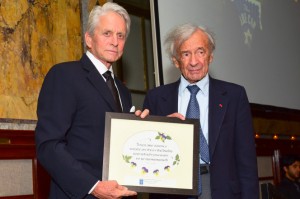
Michael Douglas posing with Elie Wiesel, holding the framed award.
What does it tell us?
In his acceptance speech, Wiesel talked about poverty since this particular group raises money for just that (though I don’t think those they help are at all destitute, a word they use). He also said, “I belong to a generation that has seen probably the darkest of its moments and lived them …but also the happiest. The Day of Liberation…when suddenly, the Americans came in! Days earlier, 10,000 left Buchenwald and were the last to leave literally the last…. we were supposed to leave the next day.” (This from the man who falsely claimed to be in a famous liberation photo from Buchenwald to help him win a Nobel Prize, but wrote in Night he was in a hospital unconscious at the same time. Poor Elie can’t keep his fantasies straight.)
So what does this tell us or why should we care about it. It tells us that the Jewish holocaust narrative, allowed to be institutionalized as real history because of long-standing anti-Germanism in Europe and America (actually fear of German competition), is a major money-making business that all Jews participate in and/or benefit from. They know how it benefits them and so they can come together and agree on monstrous lies, and celebrate monstrous liars. They are able to by-pass the facts by seeing themselves and their race as both eternal victims and God’s chosen; thus whatever they do to defend and protect themselves is okay. They are always okay.
In Germany just now, children’s events are being cut back or cancelled because there is no money for them. The needs of the migrants come first. The migrants are driven into Europe by Jewish power, don’t kid yourself, to destroy any possibility of nationalist governments by destroying the common racial genetics that make a people. Jews hate nationalism, especially in Europe and America because it can exclude them. But for Israel, they agree it is necessary!
The Aryan people are intelligent, capable, inventive, original and idealistic, but we don’t know how to stand up to the Devil. Jews, not being a truly religious people but a self-worshiping people, know the Devil is an idea who is only active in their lives if they believe he is. Both God and the Devil need us to make them real. That’s one thing we can learn from the Jews.
6 Comments
Category Featured | Tags: Tags: Jewish charity, Social Justice, The Blue Card,
Social Networks: Facebook, Twitter, Google Bookmarks, del.icio.us, StumbleUpon, Digg, Reddit, Posterous.
Thursday, January 7th, 2016
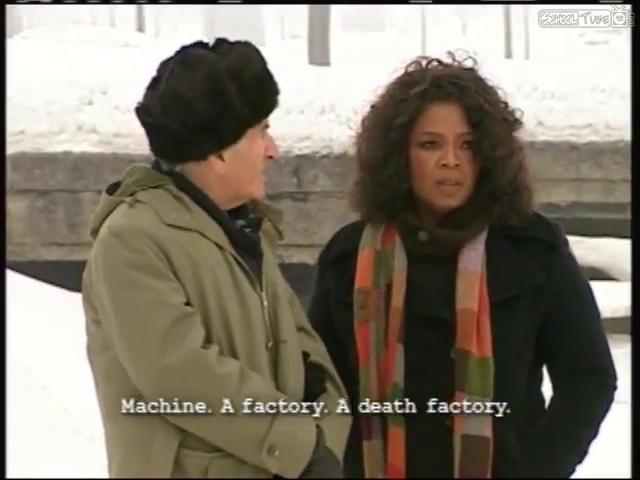
Elie and Oprah star in a very boring film about … walking around in the snow. Here they are in front of the Auschwitz 1 crematorium, feeling the horror.
By Carolyn Yeager
The Germans have been accused of making soap from jewish corpses in Auschwitz , but it takes a jew to make a soap opera there.
Victim Elie Wiesel and victim enabler Oprah Winfrey made a soap opera at Auschwitz on January 29, 2006, exactly ten years ago. The two superstars, along with Winfrey’s film crew, met in front of the entrance to Birkenau and much of that filming was added to the documentary created later in-studio by Oprah’s production team. The resulting 45-minute “movie” was broadcast as part of The Oprah Winfrey Show in May of that year.
Recall it was thirteen days earlier on Jan. 16 that Winfrey announced the “new 2006 translation” of Elie Wiesel’s Night as her newest book club selection. The next day, Jan. 17, Amazon announced it was changing the category of Night from novel to memoir. A lot of questions were raised (as it was known they would be), and the Elie-Oprah Auschwitz trip was intended to distract attention away from those embarrassing questions … to reinforce to the public that Wiesel was a genuine, suffering “death camp”survivor and Night was unquestionably his true story.
It was, in my opinion, a business venture that the advisers to both parties worked out as part of the entire deal between Oprah and Elie. All that the two headliners had to do was show up and act out the roles they knew so well. Oprah has referred to Wiesel as “my world hero” and said she was never the same after reading Night; she was the perfect gullible, unquestioning foil for him.
It was assumed by Oprah and the manipulated public that Wiesel would be her guide to a place he knew well. (And it would have been a perfect time for him to show his tattoo to the camera … if he had one.) But as I will point out, Elie’s words, or lack of them, expose him as a stranger to that place. He tells fiction after fiction, taken from lurid survivor testimonies that were discredited long ago. The only things he really describes are his emotions, his feelings, his thoughts … which become boring and are not convincing either.
In the film @3:43, Elie says, “Each time I come, I – I try not to speak for a day or two or three … ” but from what I can discover, this was only the 3rd time Wiesel had been there. The first was on Janurary 27, 1995, when he spoke at the 50th anniversary of the so-called liberation of the Auschwitz-Birkenau camp. It was probably on this same trip that he filmed a documentary beginning in summer 1994, both in Sighet, Romania and in Auschwitz-Birkenau in Poland. In that film, “Elie Wiesel Goes Home,” he is shown silently walking around the Birkenau grounds with his shirtsleeves rolled up, revealing bare arms with no sign of the tattoo A7713 he says he still has. (He said this as late as 2010.)
This 3rd and last time he made the film with Oprah, which was titled “Auschwitz Death Camp“. The lies and just plain ignorance that are packed into this program is amazing. I will refute some of it here. Elie actually says very little in the beginning but reads passages from Night in order to not speak such stupidities on camera. It is understood by most reasonably sophisticated people that Night is a creative effort—not to be taken literally. Notice that in the film he doesn’t describe his life in the camp with any detail–no names, specific persons, places, events—only generalizations anyone could come up with. For instance, standing in front of Block 17 in Auschwitz 1, where he says he lived, he claims he thinks often about those who died there, but doesn’t offer a single name or how they died.
Oprah takes in every word from the “Professor” (as she calls him) as profound, and though she responds in her trademark super-sympathetic manner, it does seem that she would have liked something more solid from him. She seemed to me to find her hero’s wandering, empty thoughts unsettling – and was pretty much left speechless. This has to be why her production team added so many background film clips and photos portraying the usual media version of the holocaust story—to add some content to a boring walk in the snow with an old con man. Sorry, but if you pay close attention, you should come to the same conclusion.
The main errors refuted
I link to the pages on Oprah.com that I am commenting on, and highlight the offending passages in boldface, so that you can follow and compare.
http://www.oprah.com/world/Inside-Auschwitz/1
As young Elie Wiesel stepped off the cattle car at the Auschwitz subcamp Birkenau, also known as Auschwitz II, he smelled the stench of burning human flesh and saw the crematorium throwing its flames into the sky. “[Mrs. Schächter] wasn’t so mad at all,” Oprah says. “She was a prophet.”
Oprah shows exceptional ignorance by believing that flames could be coming out of a crematorium chimney, but this is what was written in Night. She even believes in Mrs. Schacter, who is simply a character Wiesel invented.1
There was no stench of burning flesh in the air at Birkenau, in spite of quite a number of “survivor novels” that say so. Operating crematoria do not release any smell. Wiesel picked up that idea of “stench” from the testimonies at the Nuremberg tribunal and Soviet reports. In 1955 he thought it was safe to say such things. Today we know what he wrote did not happen.
http://www.oprah.com/world/Inside-Auschwitz/2
The systematic process of determining who would live and who would die was known as “selection.” SS officers briefly sized up each new arrival. Those deemed capable of hard labor, like 15-year-old Elie Wiesel and his father, went into the work camp. All others were sent immediately and unknowingly down the path to Auschwitz’s four gas chambers.
The “selection” was for work placement, not life or death. Those who could not work (children, elderly and sick) went into the barracks at Birkenau where they were fed and allowed to join in activities. There was actually a lot going on. Mail was delivered in both directions, packages were received, the health clinics and hospitals were busy. Some did light work in the camp. Even babies were born.
No one went to a gas chamber because there were none. Wiesel never, ever spoke of a gas chamber in his book Night, written in 1954, and further edited from 1956-58. He only spoke of people taken to the crematorium after they died, which to him at that time was only from disease, hard work and mistreatment—not gas chambers!
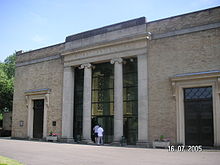
West London Crematorium, 2005
Those selected to die were told they were getting showers, then packed into the chambers by the thousands. Canisters of the deadly chemical Zyklon B were dropped in. As the toxic pellets mixed with air, cyanide gas was released. Death took about 15 minutes to come and felt like suffocation. Proud of their efficiency, SS officers witnessed the gassing as it happened through special peepholes.
None of this is true. Shower facilities were real showers, an important part of the camp disease prevention program.
“Canisters of Zyklon B were dropped in”? What would canisters do? Does Oprah expect that the ‘victims’ opened the canisters themselves?
Death from Zyklon B poisoning would not feel like suffocation. Death by poison gas is painless; one just drifts into unconsciousness.
Claiming that SS officers watched people die through peepholes is the lowest form of defamation of Germans—one thing that Wiesel specializes in. He is pawning off this gruesome “camp gossip” to Oprah and she is not questioning it. But later in the video she did keep saying she “couldn’t understand” how human beings could do such things. The answer is they didn’t.
The grisly task of burning the dead bodies in underground ovens was left to Jewish prisoners. Forced into this horrific job, they temporarily evaded their own death.
What is meant by “underground ovens”? There was no such thing. There were above-ground crematoria for hygienic disposal of human corpses, exactly the same as are found all over the world. There is nothing sinister about cremation retorts. Oven is a word meant to mislead people by bringing up images from the fairy tale “Hansel and Gretel!”
It doesn’t say much for jews if they agreed to kill and cremate their own people just to put off their own death for a short time. There is no way to force someone to do this. This is one of the weakest links in the Jewish Holocaust narrative.
http://www.oprah.com/world/Inside-Auschwitz/3
Professor Wiesel takes Oprah inside one of the few barracks still standing at Auschwitz. He says that prisoners were packed two or more to a bunk on straw mattresses. Professor Wiesel slept on similar bunks at Auschwitz and later at Buchenwald.
Wiesel never wrote of sleeping two (or more) to a bunk. He wrote that at times he was on the top bunk and his father on the bottom. In Buchenwald there was never two to a mattress, especially in the children’s barrack.
Most people don’t find straw mattresses unpleasant to sleep on, especially if they’re tired enough, but most of the people living in Birkenau actually didn’t do much in the way of work and exercise.
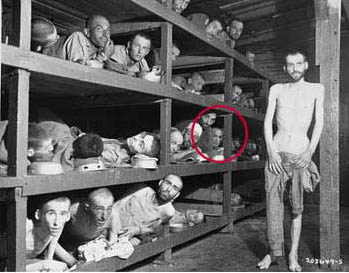
“Elie Wiesel looks out from the far right of the middle bunk.” This photo was staged in an empty barrack because the mattresses have already been removed, 5 days after liberation.
In this photo, taken by soldiers on April 16, 1945, after the liberation of Buchewald, Elie Wiesel looks out from the far right of the middle bunk.
That is not Elie Wiesel in the photo. That person looks nothing like him, but also he writes in his various memoirs that he became seriously ill with food poisoning two days after the April 11th liberation and was taken to a hospital where he stayed for two weeks. Think how ludicrous it is that he should claim to be in both places at the same time! This should tell you something about Wiesel’s irresponsibility when it comes to the holocaust narrative. Anything goes.
Rats, lice and other vermin were rampant. Deadly outbreaks of dysentery, typhus, tuberculosis and malaria wiped out entire sections of this camp. Inmates wore thin cotton uniforms year round, even in the harshest winter. Given only meager rations of stale bread and meatless soup, many starved to death. For prisoners not sentenced to die in the gas chambers, the average life span was barely four months.
Complete nonsense. The barracks at Birkenau were cleaned and disinfected regularly. Wiesel even writes about it in Night.
There are photographs of outdoor workers wearing heavy coats, boots, caps and gloves in winter.
NO ONE STARVED TO DEATH. The emaciated inmates at the end of the war were afflicted with wasting diseases, not starvation.
That the life span was 4 months is an invention picked up by Elie Wiesel from other “survivor stories.” Why then are there millions who were in the camps for several years and are now still getting a reparation check every month?
For saying these kinds of irresponsible things, Wiesel should be reprimanded by the Auschwitz-Birkenau Memorial staff, but he isn’t.
http://www.oprah.com/world/Inside-Auschwitz/7
At Auschwitz 1, the notorious Dr. Josef Mengele, known as the Angel of Death, conducted sadistic medical experiments on prisoners, infecting them with diseases, rubbing chemicals into their skin and performing crude sterilization experiments in his quest to eliminate the Jewish race by any means possible.
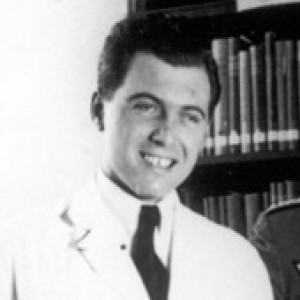
Dr. Mengele was a normal man who served humanity as a doctor.
All the stories about Mengele are inventions. True, he was interested in gaining knowledge about certain medical conditions but not in the way the crazy, narcissistic jews talk about it. He was actually a goodhearted man who has been made into a devil. Elie Wiesel never laid eyes on him anyway.
In Block 11, the secret German police, the Gestapo, interrogated and tortured political prisoners and anyone who dared to disobey.
The Gestapo had an office at Auschwitz. There was a good deal of sabotage and contact with the enemy carried out by Auschwitz 1, 2 and 3 inmates, especially the Poles who had a strong network with Warsaw and London. This could not be allowed and was punished severely. But the Gestapo didn’t regularly “torture political prisoners” or those who “dared to disobey.” That is more camp gossip. Good police know how to gather evidence and get confessions without torturing people. Block 11 was simply the camp jail and it has has been built up into a torture chamber, which it wasn’t.
“At least they had individual deaths—even this becomes a privilege,” Professor Wiesel says. “Here, actually, death was a release because it followed the torture.”
What’s he talking about? Nothing, it’s Wiesel-speak. We can’t know what he means by “torture” since everything is a torture for him. But he pushes the theme that death was preferable to life in the camps—at the same time he describes how he and everyone else clung to life. He preaches that the camps were places of continual punishment, which isn’t the reality at all. If it were, how would so many millions have come out at the end of the war in good health?
http://www.oprah.com/world/Inside-Auschwitz/8
A case filled with empty Zyklon B cans is a haunting reminder of the poisonous gas used by the Nazis for killing prisoners on a massive scale. “When the gas chambers were full, an SS man put on the gas mask, went to the roof, opened the little window there and threw such a can into the gas chamber,” Professor Wiesel explains. “Unspeakable pain and horror—that’s how they were killed. Mothers and children hugging.
Once again, the claim of mass killing is false. Prisoners were kept as healthy as possible in order to be able to work. And also once again, they’re throwing cans into the “gas chamber” through a little window in the roof. Pretty stupid of the SS men!
Also – once again – death by Zykon gas is painless.
“Mothers and children hugging” is pure soap opera fiction to effect the emotions of school kids and women like Oprah. It has been shown conclusively that there never were any homicidal gas chambers. It was black ops propaganda and is now just a plain old Big Lie.
http://www.oprah.com/world/Inside-Auschwitz/10
Baby clothes and shoes are all that remain of the death camp’s smallest victims. Infants were killed immediately on arrival, as were the young mothers who refused to leave their children.
No evidence for that at all. A few items of baby clothes is sure not evidence. The evidence shows that children were provided with kindergartens at Birkenau with painted murals on the wall. Babies were born at the hospital at Auschwitz. I could go on and on.
Wiesel is on overdrive to make Nazis guilty of unspeakable crimes … the better to extort billions from Germany for Israel.
In a short promo video, Oprah says to Elie “You saw the babies thrown into the fire” while an image of cremation “ovens” is shown on the screen. This is purposely misleading because Elie was speaking of babies thrown into open pit fires—but no one will believe that anymore. Wiesel won’t give up his “jewish-babies-burned-alive-in-fire” narrative because fire is part of the Jewish redemption narrative and it is the most evil curse he can put on the hated “Nazis.”
http://www.oprah.com/world/Inside-Auschwitz/12
The Nazis went to sinister lengths to profit from the extermination of millions, and no possible resource was wasted. Human hair shorn from victims’ scalps was gathered and sold to German factories to make cloth.
Human hair was cut short to control body lice that the jews and others brought with them to the camp–not to make a profit. They no doubt couldn’t have profited, considering all the barbers that were necessary. It was a life-saving measure.
What was done with the hair after it was cut was of no importance to the inmates. Do you want to keep the hair that is cut from your head? Do you worry that the salon or barber shop will make a profit from it? I doubt it. Wiesel tries to connect cutting of hair with extermination, but there is no connection. Failing that, he projects it as a humiliation.
Wiesel wants you to believe that the “Nazis” made money off the jews’ bodies by selling their hair, when in fact they were just making use of all resources in their wartime economy. Is it better to throw stuff away, or to recycle it?
Final thoughts
We could ask why Elie didn’t take Oprah to see the swimming pool. Or take her into one of the large kitchens, or the theatre. Or point out where the soccer field had been in Birkenau. Apart from the fact that he may not even know about this places, since he never lived there, both knew that bringing up that aspect of the camps would defeat the purpose and soapiness of their soap opera. Their purpose was to reinforce the stature of Elie Wiesel and his book Night, and a secondary benefit was to give Oprah more tear-jerking content for her TV show. In May 2011 Night was #3 on the Top Ten bestseller list from the Oprah Book Clubs in their final 10 years, according to Nielsen BookScan.
Winfrey did her best as an actress even though she broke character in a couple places, halting expressing her confusion about the story, saying she couldn’t make any sense of it. Wiesel immediately counseled her that she should not look for sense because none could be made of it. It is unexplainable and inexplicable … and a permanent mystery. As for upholding his part in making the film interesting, Wiesel totally failed. He was a bore. His Auschwitz experience remains preposterous and unconvincing—really just a soap opera.
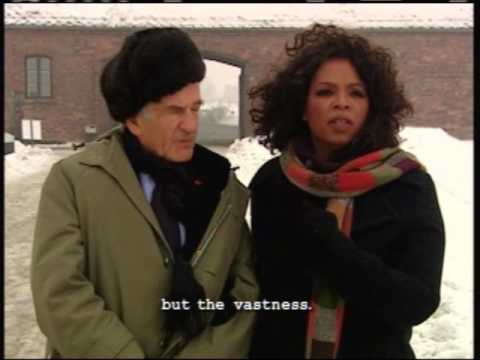
Endnotes:
- Wiesel said in an interview with the Paris Review in 1984:
Sighet, my little town, all the characters that I am inventing or reinventing, all the tunes that I have heard. It is always, whatever its name, that little town Sighet.
The real Sighet was actually the largest city in Maramures province with a population of 50,000 to 90,000 people, and was 35 to 50% Jewish … as written by Wiesel himself in Un di velt hot geshvign, the Yiddish precursor to Night. But in Wiesel’s other books, Sighet is a product of his imagination.
3 Comments
Category Featured | Tags: Tags: Auschwitz-Birkenau, crematoria, Jewish Soap, Night, Oprah Winfrey, Soap opera, Zyklon B,
Social Networks: Facebook, Twitter, Google Bookmarks, del.icio.us, StumbleUpon, Digg, Reddit, Posterous.
Saturday, January 2nd, 2016
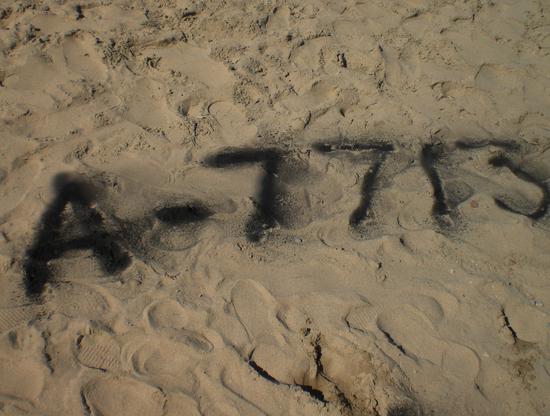
The number A-7713 is hugely important in the life of Elie Wiesel, but not in the way most would think.
By Carolyn Yeager
A7713 IS A NUMBER that is widely recognized because of the story Night written by Elie Wiesel.
According to that story, 15-year old Eliezer had that very number tattooed on his left forearm two days after he arrived at Auschwitz-Birkenau in May (or was it April?) 1944.
Wiesel says the story is a true report of his life experience and that he has that number on his arm still today. Yet by refusing to show it to the public for the past 60 years, he is as good as admitting that he does not have it.
In courts of law, whenever a claimant fails to provide proof of his claim, he forfeits his right to that claim. Wiesel has failed to provide proof that he has the tattoo so he must give up the claim. This is the clearest admission he could make, would you not agree? I mean, we’re not talking about a private area of his body that he would not want to expose, but only his left forearm.
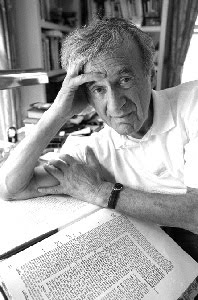
FALSE ALARM. When this image is magnified, the possible “tattoo” is seen to be just a denser area of spots and discoloration on Wiesel’s arm, not in any way a number. See here.
Wiesel keeps his arm covered at all times in public by wearing suits and is never asked about the tattoo by the complicit media. However, on a few occasions he must have forgotten and did allow himself to be photographed with bare arms, so we do have a few photos of this part of his anatomy—but with no tattoo visible at all! When asked to comment on that fact, not only Mr. Wiesel, but Mrs. Wiesel, and all Wiesel’s friends and business and academic associates remain totally silent. Even Oprah Winfrey has said nothing about it. This is not a reasonable way to behave.
Now put together the above with the knowledge that Wiesel’s entire fabulous career, success and wealth (including the Nobel Peace Prize and other coveted awards) is dependent on his being Auschwitz prisoner A7713, and you easily see the crucial importance it has for him. There is no debate about it. A7713 is essential to Wiesel’s life story and the prestige and book sales he enjoys today.
Even with all that at stake, he won’t show it to anyone?
This can only be interpreted as an admission that he doesn’t have it. And he knows it. He knows that he has admitted by default that he does not have that tattoo (and therefore is not who he says he is) but he obviously prefers not to say so. He will keep the charade going as long as he lives, which is not much longer.
At this point his admirers and supporters start coming up with harebrained reasons for why he doesn’t have it or why he doesn’t show it. Their “reasons” ignore known facts and common sense, and are easily knocked down. I look forward to receiving some in the comments, although defense for Elie doesn’t have much staying power. His supporters may be starting to realize that it is he who makes them look foolish because of his refusal to engage on the issue. Especially, he refused to engage with Miklos Grüner on the issue—Grüner whose registration and other documentation at Auschwitz is in perfect order and who actually has a tattoo to match.
It was a fateful day for Elie Wiesel when, just off his great triumph at the Nobel Prize ceremony in Oslo in 1986, he went to Stockholm to meet “fellow Buchenwald child survivor” Miklos Grüner on a television show. That short meeting (“Wiesel refused to show me his tattoo”) and the book Night he was given raised Grüner’s suspicions. He began his search for documents relating to Elie Wiesel and Lazar Wiesel.
The result is that we discovered there are no documents at Auschwitz for Elie or Eliezer Wiesel with the birthdate 9-30-1928, nor is there a single photograph of him in any camp. Without the tattoo, Wiesel’s got nothing at all to show he’s a survivor except his own fake memoir.
So let’s stir things up and get the information out there. A huge number of people, institutions and governments are guilty of being complicit in the fraud. It has become one of those “too big to fail” situations, and in truth, without Grüner hunting down the documents (which only a former inmate could access), Wiesel would have gotten away with it.
Hats off to Michael (Miklos) Grüner! He’s not perfect but he’s done the world a great service.
Sunday, December 27th, 2015
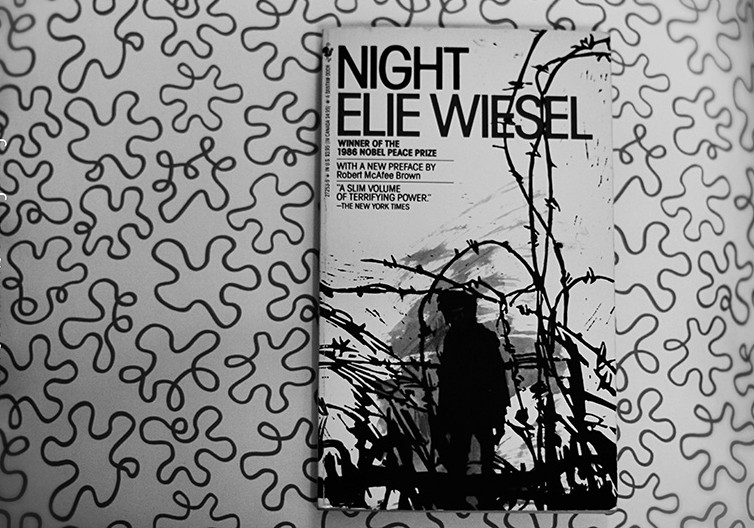
The original “Night” by Elie Wiesel is a puzzle for discriminating readers.
By Carolyn Yeager
copyright 2015 Carolyn Yeager
The pieces to the puzzle of Elie Wiesel and his book Night will never come together to form a coherent image. Readers and critics have long puzzled over the nightmarishly grotesque events that Wiesel presents as real, and refuses to repudiate. But he has actually given us the explanation all along—it’s just that it’s one so many don’t want to believe.
In his autobiography, Wiesel recounts a time when, visiting Israel, he went to see the “young” Rebbe of Wizhnitz, whose father he remembered with reverence from his childhood. At the end of the visit, which took two pages (273-75) to tell, the Rebbe questioned the young writer without being satisfied with his answers. Then:
The conversation became more relaxed. He asked me about my work. He wanted to know if the stories I told in my books were true, had they really happened. I answered not too convincingly: “In literature, Rebbe, certain things are true though they didn’t happen, while others are not, even if they did.”
I would have loved to have received his blessing.1
Notice that he first says he is writing “literature”2, not faithful accounts of his own experience. Next, we understand that by withholding his blessing, the noted Hasidic rabbi conveyed he was not pleased with the evasive answer of the Hasidic Jew Elie Wiesel. Wiesel himself says his answer to the final question was “not too convincing.” And finally, since Wiesel admits that he writes about things that never happened as being true, we can’t even be sure that this event happened, can we. This is the problem with everything in the life and work of Elie Wiesel.
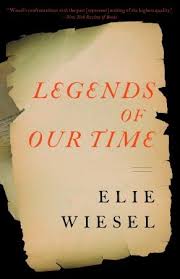
Legends of Our Time by Elie Wiesel
In a book first published in 1968, Legends of Our Time, Wiesel tells the story of that same visit to the rabbi this way: The Rebbe is troubled to learn that Wiesel has become a writer, and wants to know what he writes. “Stories,” Wiesel tells him, “…true stories”:
About people you knew? “Yes, about people I might have known.” About things that happened? “Yes, about things that happened or could have happened.” But they did not? “No, not all of them did. In fact, some were invented from almost the beginning to almost the end.” The Rebbe leaned forward as if to measure me up and said with more sorrow than anger: That means you are writing lies! I did not answer immediately. The scolded child within me had nothing to say in his defense. Yet, I had to justify myself: “Things are not that simple, Rebbe. Some events do take place but are not true; others are—although they never occurred.”
What are we to make of this? Truth loses all meaning; Wiesel acknowledges he tells tales that he wants you and me to believe really happened when he himself knows they didn’t. He doesn’t apologize either. He justifies. He deflects the rabbi’s sharp moral denunciation with his own measure of pseudo-mystification, in spite of the fact that his rebbe sees through him. And that is the way he is with the public too—even though it is understood by the intelligent critics that he is writing fiction, he keeps up the “witness” pretense for the gullible and the young.
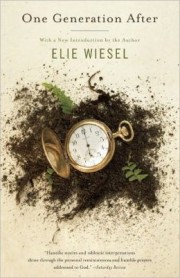
One Generation After by Elie Wiesel
In another book, One Generation After, first published in 1965, he wrote the same thing. He referred to it in a conversation with Giles Lapouge in 1970, which became a chapter in the book edited by Robert Franciosi, Elie Wiesel: Conversations (2012). The chapter was titled “Elie Wiesel, The Witness.” On page 33, Lapouge quotes Wiesel:
In [my] book “One Generation After” there is a sentence which perhaps explains my idea: “Certain events happen, but they are not true. Others, on the other hand, are, but they never happen.” So! I undergo certain events and, starting from my experience, I describe incidents which may or may not have happened, but which are true. I do believe that it is very important that there be witnesses always and everywhere.
There you have it—Wiesel’s method. He makes it up! And the overarching purpose of his efforts is to contribute to the well-being of the Jewish State of Israel. To Wiesel this is the greatest cause of all, for which he offers his writing ability to contribute to the “Holocaust” stories that are so crucial to Israel’s success. In this, Wiesel has joined a horde of other Jews who do the same, copying from one another, but no other “witness testimony” has had the impact of Night.
It should be understood that Wiesel has been a fervent Zionist since his youth—well before the deportation of Hungarian Jews. His whole family were Zionists, and his Father, according to Elie in several books, had spent time in a Budapest jail for involvement in smuggling operations, sending Jews, money, and probably weapons to Palestine.
Then he adds how necessary it is to have witnesses—all the time and everywhere! Sure, because the Soviet-Jewish-originated ‘Holocaust’ narrative, made up of outlandish events that never occurred, many of which Elie continues to insist did, needs witnesses to make it seem believable. It needs witnesses who cannot be easily doubted, so Wiesel paints all “survivors” as saints and martyrs who could not possibly make up the horrendous stories they tell. Elie is one of these martyrs.
It’s true, one of the most common questions one hears is: What reason would they have to lie? “A person would not lie about this kind of thing,” says charles, a commenter to this site. I’ve heard and read that many times. Yet, Elie Wiesel admits that he does! He just doesn’t call it a lie—but a lie by another name is still a lie. And many others have been caught at it: Fragments by Binjamin Wilkomirski, Angel at the Fence by Herman Rosenblat, Misha: A Mémoire of the Holocaust Years by Misha Defonseca, the Ovitz dwarf family’s story, to name just four that are well known.
Wiesel has repeated his idea that “some things are true that never happened and other things that happened are not true” too many times for us to ignore it. He has written it in four books documented here, and probably more that I don’t know about.3 It’s the key to what has been called “the riddle of Elie Wiesel.” But it’s no riddle, just that familiar Jewish talent for telling big whoppers … what he calls “storytelling.”
The Storyteller – an honored Jewish tradition
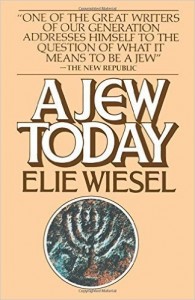
A Jew Today by Elie Wiesel
In another book, A Jew Today, a collection of essays published in 1979, the second essay is titled “An Interview Unlike Any Other.” In it he explains how he became a storyteller:
How did I become a writer? What was it that drove me to […] the role of storyteller. […] Everything hinged on chance, Birkenau, Auschwitz, Monowitz-Buna, Buchenwald: that very first night I might have joined the procession of old men and children.4 I might have remained in one camp and not reached the next. I might have passed through all four and followed my father into icy nothingness before the end of night. Liberated by the American army, ravaged by poisoned blood, I might have succumbed on a hospital bed, a free man. After being reunited with my comrades I might have missed the children’s transport leaving for France; I might have gone back to Translvania or elsewhere, done other things. I might have engaged in or endured other battles.
Yes, as a storyteller he has control and could have told it other ways, or not told it at all. Remember, true stories need not have actually taken place. In the first essay of A Jew Today, titled “To Be a Jew,” he tells a story of the hated “other” that he swears is true.
Once upon a time, in a distant town surrounded by mountains, lived a small Jewish boy
[…]
Naturally, this little boy felt at ease only among his own people, in his own setting. Everything alien frightened me. And alien meant not Moslem or Hindu, but Christian. The priest dressed in black, the woodcutter and his ax, the teacher and his ruler, old peasant women crossing themselves as their husbands uttered oath upon oath, constables looking gruff or merely preoccupied—I understood and considered normal, and therefore without remedy.
I understood that all these people, young and old, rich and poor, powerful and oppressed, exploiters and exploited, should want my undoing, even my death. True, we inhabited the same landscape, but that was yet another reason for them to hate me. Such is man’s nature: he hates what disturbs him, what eludes him. We depended on the more or less unselfish tolerance of the “others,” yet our life followed its own course independently of theirs, a fact they clearly resented. Our determination to maintain and enrich our separate history, our separate society, confused them as much as did that history itself.
[…]
All I knew of Christianity was its hate for my people. Christians were more present in my imagination than in my life.
[…]
Painful irony: We were chased from country to country, our Houses of Study were burned, our sages assassinated, our school-children massacred, and still we went on tirelessly, fiercely, praising the inviolate sanctity of life and proclaiming faith in man, any man.
An extraordinary contradiction? Perhaps. But to be a Jew is precisely to reveal oneself within one’s contradictions by accepting them. […] it means fervently exploring the Talmud, with its seemingly antiquated laws and discussions, while outside, not two steps away from the heder or the yeshiva, one’s friends and parents are rounded up or beaten in a pogrom; it means asserting the right of spirituality in a world that denies spirituality;
[…]
All this was really so. The small Jewish boy is telling only what he heard and saw, what he lived himself, long ago. He vouches for its truth.
Yet truth is malleable to the Jewish storyteller—like God, he forms the clay according to his pleasure. The God of Abraham is all-powerful and a worker of miracles. When Wiesel refers to Jewish “spirituality in a world that denies spirituality” he’s referring to these very contradictions that Jews allow each other, but Gentiles call lies.
To be a Jew is to live with contradiction
Let’s look at a few more quotes that show Elie’s contradictions:
Elie Wiesel was questioned under oath in a California courtroom in 2008:
Q. And is this book Night that you wrote a true account of your experience during World War II?
A. It is a true account. Every word in it is true.5
Night was classified by its publishers and booksellers as “literature, fiction, novel” from 1960 until 2006 with no objection from the author. Yet Wiesel confidently swears to this lie on the witness stand in a US court of law two years after his book was switched to “autobiography” – no doubt because he has convinced himself that things which never happened can be more true than things that did happen. Or, in other words, truth is in the eyes of the teller.
Night, pg 39: “Here, kid, how old are you?” It was one of the prisoners who asked me this. I could not see his face, but his voice was tense and weary. “I’m not quite fifteen yet.”
Night‘s main character Eliezer is 14 going on 15 when he arrives at Birkenau. “Father” is 50. But Elie Wiesel himself is 15 going on 16 in May/June 1944. It’s possible he wanted to make Eliezer seem more vulnerable3 by being younger, and Father also more vulnerable by being older. Because in real life, Elie’s father would have been more like 40 to 45 years old at the time. But the father in Night rather quickly becomes a worn out, sick old man. This means every word is not true, and it is not a true account of his experience. But Wiesel will insist it is true, nevertheless. [Marion Wiesel changed that sentence I underlined to simply “Fifteen” in her 2006 translation, page 30. She also changed “tense” to “warm.”]
Un di Velt hot geshvign, Page 213: (Speaking of Jan. 1945) I was fifteen years old then. Do you understand—fifteen? Is it any wonder that I, along with my generation, do not believe either in God or in man; in the feelings of a son, in the love of a father. Is it any wonder that I cannot realize that I myself experienced this thing, that my childish eyes had witnessed it.
More of Wiesel’s “truth” is his answer to a student’s question, as reported in the Dayton [Ohio] Daily News:
A student asked Wiesel if he still has his concentration camp number and if it serves as a reminder of those terrible experiences. “I don’t need that to remember, I think about my past every day,” he responded. “But I still have it on my arm – A7713. At that time, we were numbers. No names, no identity.”
I assume that with that question the student hoped to get Wiesel to show his tattoo, but no luck. Apart from the fact that he told the student a lie about having the number tattooed on his arm, the rest of his statement is not factually true either. Yes, the inmates had a number just as in every detention or prison facility anywhere in the world. But their names were still known, and they might be addressed by their name, also, depending on the circumstance. [They were not tattooed at Auschwitz to replace their name with a number, but as an identifying mark in case of escape.] And since they were selected for work based on their history and abilities, their identity and history had to be known. Plus, all the documents from the camps included their name, birthdate and sometimes the name of their parents. Wiesel’s purpose for saying they were only numbers is not to testify to actual life in the camps, but to gain sympathy for Jews and condemnation for Germans.
This interesting passage is on page 27 of the Yiddish And the world remained silent, but is not included in the shorter French or English Night:
We had opportunities and possibilities to hide with regular goyim and with prominent personalities. Many non-Jews from the surrounding villages had begged us, that we would come to them. There were bunkers available for us in villages or in the mountains. But we had cast aside all proposals. Why? Quite simple: the calendar showed April 1944 and we, the Jews of Sighet, still knew nothing about Treblinka, Buchenwald and Auschwitz.
Two things here. It again says it was April, not May, when the Jews first learned they would be deported. It confirms the passage on page 83 of the Yiddish book: “It was a beautiful April day,” stated about one of their first days in Auschwitz-Birkenau!
The second thing—it is not true the Jews of Sighet still knew nothing, which is what Wiesel writes in Night. In his later real memoir he tells us that non-Jews offered the Wiesel family places to stay. Their Christian maid Maria begged them to come to her village and she would keep them safe. How many Jews may have taken advantage of those offers? But Shlomo Wiesel refused to accept this kindness of Christians, and Elie’s only explanation is that they still didn’t believe the stories they were hearing. Then he blames the world for not warning them! Elie describes it in more detail in his autobiography, All Rivers Run to the Sea, on page 63 and 68-69.
Wiesel uses excess, exaggeration and defamation
I’ll now return to the book One Generation After mentioned above [copyright 1965, 1967, 1970, and 2011 by Elie Wiesel] and the new introduction he wrote for it in 2011. Here we find some of the more exaggerated of his prose continuing to be put forward, not just back in the past, but as recent as 2011. He is standing by the wild statements and grotesque images that he first conjured up in the 1950’s.
Page vi
When speaking about that era of darkness, the witness encounters difficulties. […] For there are no words to describe what the victims felt when death was the norm and life a miracle.
[…]
Let me evoke those times:
Babies used as target practice by SS men … Adolescents condemned to never grow old … Parents watching their children thrown into burning pits …
Page vii
As I have said many times: Not all victims were Jews, but all Jews were victims; for the first time in recorded history to be born a Jew became a crime. Their birth became their death sentence.
Jewish children were condemned to die even before they were born. What the enemy sought was to put an end to Jewish history; what he wanted was a new world, implacably, irrevocably devoid of Jews. Hence Auschwitz, Ponar, Treblinka, Belzec, Chelmno, and Sobibor: dark factories of death erected for the Final Solution. Killers came there to kill and victims to die.
That was Auschwitz, an executioner’s ideal of a kingdom of absolute evil and malediction, with its princes and beggars, philosophers
Page viii
and theologians, politicians and artists; a place where to lose a piece of bread meant moving a step closer to death, and a smile from a friend, another day of promise.
At the time, the witness [EW] tried to understand; he still does not: How was such calculated evil, such bottomless and pointless cruelty possible? Had Creation gone mad? Had God covered his face? A religious person cannot conceive of Auschwitz either with or without God. But what about man? How could intelligent, educated, or simple law-abiding citizens fire machine guns at hundreds of children and their parents, and in the evening enjoy a cadence by Schiller, a partita by Bach?
Page ix
And now, sixty years later, the entire world listens to the words of the witness. Like Jeremiah and Job, we could have cried and “cursed the days dominated by injustice and violence.” We could have chosen vengeance. We did not. We could have chosen hate. We did not.
[…]
But it is not too late for today’s children […] for their sake that we are duty-bound to denounce anti-Semitism, bigotry, racism, and religious or ethnic hatred. Those who today preach and practice the cult of death, using suicide terrorism, the scourge of this new century, must be condemned for crimes against humanity.
But … will the world ever learn?
(Signed) Elie Wiesel, 2011
Ah, Wiesel’s favorite ending, putting himself in the morally superior position to “the world.” Also notice that he has gone from the German enemy to the Palestinian and Arab enemy. And that he “denounces” anti-Semitism first, though it is a part of the other three so doesn’t need to be specifically mentioned at all.
And from pages 43-44 of that book:
At Auschwitz one breathed contempt and indignity; a crust of bread was worth more than divine promises, a bowl of soup transformed a sensitive human being into a wild animal.
[…]
A killer, for his amusement, simulated the execution of a Jew; he knocked him unconscious and fired a shot into the air. Opening his eyes, the Jew saw his killer bent over him, sneering: “You thought you could escape us by dying? Even in the other world we are the masters!”
An anecdote which contains a part of truth: in dealing with the victims, in an effort to break their morale before annihilating them, the executioners assumed the role of God. They alone could, by decree, proclaim the limits of good and evil. Their idiosyncrasies were law and so were their whims. They were above morality, above truth.
Notice that Wiesel invents greater cruelties than ever existed in the camps, such as a desire to break the inmates’ morale before killing them. There can be no reason for this other than pure viciousness. Indeed, this is what Wiesel wants his readers to believe about the Germans because it’s the only acceptable explanation for this educated people’s wholesale rejection of Jews. Since Jews are held to be blameless, it had to be the madness of those who had succumbed to anti-Semitism, bigotry and racism, with no other serious explanation ever considered.
This book, One Generation After, is typical of most of Wiesel’s books. He repeats the same themes over and over; one finds even the same wording in passages he has taken from earlier books. His favorite themes are Jews and Jewish history, his Jewish childhood with Jewish relatives and rabbis, the Jewish Holocaust, Israel and his great affection for it. He also likes to write about the depravity of the Germans of the Third Reich. You really have be a firm believer that the Shoah was just as he says it was to be able to connect with his writing. Once you learn that most of what he writes is not true, it loses its fascination and becomes tiresomely repetitive.
The next step
When we understand and accept that Wiesel is not telling the truth—that he is not recording what he actually saw and heard at all, but is writing literature in support of Israel and Jewish profiteering—then we are free from the exaggerated guilt that Elie Wiesel’s writing heaps upon us. Since he has disqualified himself by his answers to the Rebbe of Wizhnitz, it’s our duty to bring this to the attention of as many others as possible in a serious way. For when a man says and writes things that could not possibly have happened but insists they’re true and gets a Nobel Prize for it, that’s no joke.
It’s interesting that Wiesel has never tried to hide his words to the rebbe—as though it is not a failing at all. I’ve come to understand that it has to do with being a Jew. “To be a Jew is precisely to reveal oneself within one’s contradictions by accepting them,” he wrote in his essay “To Be a Jew.” The Kol Nidre prayer is another example of being a Jew. Has Elie Wiesel here revealed the secret weapon for Jewish success? – it being their fantastic ability to tell lies – to accept contradictions – and call it spirituality?
Elie Wiesel likes to portray Jewishness as an embrace of a superior spirituality that Goyim are too dense to appreciate. But “To each his own” and also “Oil and water don’t mix.” Jews are the oil and always rise to the top. For we Occidentals, how we view truth is the essence of who we are. We know the difference between true and false just as we know that 2+2=4 by just being able to count. We’re a light-loving scientific people more than a mystical-minded people and we don’t function well when confused by the Oriental slant of the Jewish mentality. We do have the right and duty to experience our own world view and our own natural understanding in our own way. That means we should no longer allow ourselves to be trapped in a Jewish world view … such as the Old Testament and the Talmud. Or Holocaust literature. A separation from Jews and their lies is what we need.
We can begin with rejecting Elie Wiesel and all his writings in total. That would be a great start on the road to recovery from a long illness.~
Endnotes:
1. All Rivers Run to the Sea, Memoirs, Elie Wiesel, Knopf, 1995, page 275.
2. Literature: n. American Heritage Dictionary: Imaginative or creative writing, especially of recognized artistic value.
Merriam-Webster dictionary: written works (such as poems, plays and novels) that are considered to be very good and to have lasting importance.
3. Being interviewed by “The Paris Review” in 1984 about his writing, Wiesel said his favorite subject was his childhood and “Sighet, my little town, all the characters that I am inventing or reinventing …
http://www.theparisreview.org/interviews/2995/the-art-of-fiction-no-79-elie-wiesel
4. Referring to his tale of seeing old men and children being forced into a pit of fire on the night he arrived at Birkenau. He has later said he is not sure that he was dreaming, but no, he insists he saw it. Along with a truckload of Jewish babies being thrown in. Night, Marion Wiesel translation, 2006, pages xiii-xiv.
5. Source: Superior Court of California. County of San Francisco. Before the Honorable Robert Donder, Judge Presiding, Department Number 23. People of the State of California, Plaintiff, vs. Eric Hunt, Defendant. Testimony of Elie Wiesel, July 8, 2008, p. 7.
18 Comments
Category Featured | Tags: Tags: Elie Wiesel, Night, Rebbe of Wizhnitz, To be a Jew,
Social Networks: Facebook, Twitter, Google Bookmarks, del.icio.us, StumbleUpon, Digg, Reddit, Posterous.
Wednesday, December 23rd, 2015
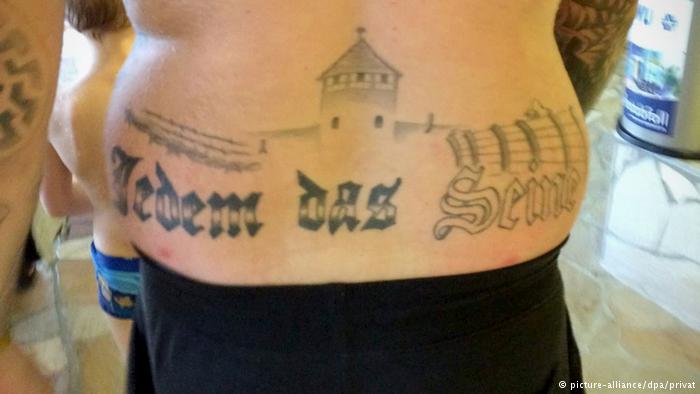
This is the tattoo that, if seen by the public, will incite hatred for Jews, according to prosecutors and courts in Brandenburg, Germany. But why wouldn’t it incite sympathy just as well?
By Carolyn Yeager
In a Berlin court, a German man is convicted for having a tattoo resembling a concentration camp entrance on his body.
Why then is Elie Wiesel not convicted in Germany for not having a concentration camp tattoo on his body, but saying he does?
Wiesel was in Germany at least three times impersonating a “nazi” concentration camp survivor. His first visit was in June 1986 when he spoke in Loccum, West Germany as the author of the book Night, which he claims to be a record of his own experience. In Night, the main character is tattooed with the number A7713 on his left forearm, which Elie claimed under oath in California is still there on his arm. Apparently, no one in Loccum asked to see it.
He returned the next year in November 1987 and spoke in a modern conference center inside the shell of the destroyed Reichstag. The title of his talk was “Reflections of a Survivor” in which he, as in the prior year, couldn’t keep from speaking words of blame toward the German people.
On June 5, 2009 he was at the Buchenwald Memorial outside of Weimar, accompanying the President of the United States and the Chancellor of Germany in the guise of a former resident of the camp. I know this for sure because I was in Dresden on this very day and watched it on German television.
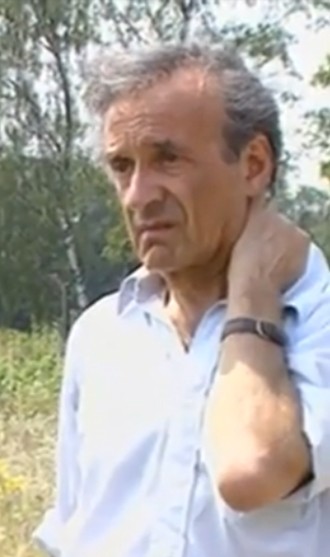
Elie Wiesel’s left arm in bright sunlight, taken from his video “Elie Wiesel Goes Home”
Elie Wiesel’s main authentication for being interned at both Auschwitz/Birkenau/Monowitz and at Buchenwald is the tattoo A7713 which matches records for a Lazar Wiesel from Sighet. Elie says he has it on his arm but he has never allowed the public to see it! He does not confirm his claim by showing his forearm, as do so many survivors – the very survivors he claims to be one with.
Yet on some occasions he’s been photographed with short sleeves and there is no tattoo visible on either of his arms. This is absolutely incredible, right? That the world’s most famous holocaust survivor is in truth “the emperor wearing no clothes” … the “elephant in the living room.” The world media say nothing because they can’t—they pretend not to notice and hope you do the same.
To get to the point
But why is Marcel Zech, a 27-year old town council member representing the National Democratic Party (NPD) dragged into court and convicted of sedition and inciting hatred because of a tattoo on his lower back that no one would normally see anyway … while Elie Wiesel comes to Germany at age 57, 58 and 81, and with great publicity misrepresents himself as an Auschwitz and Buchenwald concentration camp survivor with the tattoo A7713 on his arm that he doesn’t have, and the German Justice system doesn’t even notice.
I demand that German prosecutors investigate Wiesel’s claim to have a tattoo, and bring charges against him when they find he doesn’t have one, never did have one—charges of defrauding the public and of inciting hatred against Germans as a people.
Let’s take a look at the “crime” of Marcel Zech. According to the photo taken at a pool party, Zech’s tattoo (see image above) is the likeness of a structure that resembles the entrance to the former Birkenau Camp in Poland but there is no name identifying it as such. Under the image are the words Jedem das Seine in large gothic-style letters. Jedem das Seine translates as “To each his own” and was on the gate of the Buchenwald camp entrance, not at Auschwitz or Birkenau. So what is the connection, what is the message?
I would say there is no message since the image and the phrase don’t go together in the “holocaustian” sense. Is it illegal in Germany to use the words Jedem das Seine? Can’t be.1 Is it illegal in Germany to post or publish an image of the entrance to Birkenau? No, because it’s done all the time, especially by Jews. So what is the problem with Marcel’s tattoo?
The problem is that he is an office-holding member of the NPD, which the federal government in Germany is currently trying to ban. Yes, ban it as a political party. It has been a German political party since 1964!
On the other hand, Elie Wiesel is a Jew, and Jews are never investigated for anything in Germany, let alone found guilty of something. Have you ever heard of it? I did an internet search and came up with nothing.
State prosecutors had demanded that the accused [Zech] be sentenced to 10 months in jail without parole because, according to DW, he seemed to be “a politically motivated criminal, who had trampled on the core values of the German constitution.” What are the “core values” of the German constitution?
Consulting the German Basic Law (constitutional law), I come up with a few:
Art. 3: No person shall be favored or disfavored because of […] political opinions.
Art. 4: … freedom to profess a religious or philosophical creed, shall be inviolable.
Art. 5: Every person shall have the right freely to express and disseminate his opinions in speech, writing, and pictures.
But then there is also Article 139 [Continuing validity of denazification provisions]:
The legal provisions enacted for the “Liberation of the German People from National Socialism and Militarism” shall not be affected by the provisions of this Basic Law.
Get that?–The German people were liberated. At least we know that Germany is still functioning under the 1945 Military Control Council of Supreme Commander Dwight Eisenhower. Not much progress there.
But back to Elie Wiesel: What is the law against impersonating a concentration camp survivor? It appears there is none. While it’s a crime to minimize the “Holocaust”, it’s perfectly okay to maximize it. Lying about the Holocaust by adding to the narrative is fine; just don’t take anything away from it. Not when you’re in Germany.
[By the way, the Deutsche Welle story repeated a falsehood from a previous story when it said that Buchenwald was “the Nazi regime’s largest death camp.” Buchenwald is not considered to be a “death camp” even by holocaustian historians. Martin Schultz was using the occasion of a 70th anniversary to advise that because of Buchenwald, Germans were obligated to welcome refugees.]
Endnotes
1. From Dictionary.com: One has a right to one’s personal preferences, as in I’d never pick that color, but to each his own . Versions of this maxim appeared in the late 1500s but the modern wording was first recorded in 1713.
Sunday, December 6th, 2015
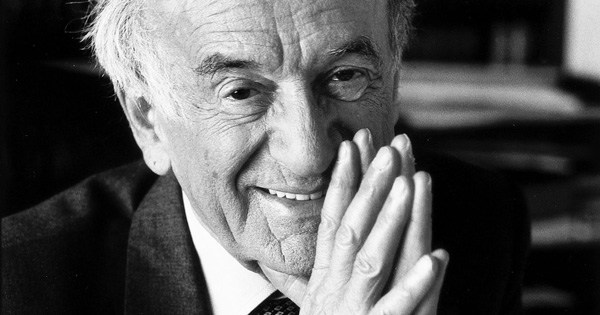
Elie Wiesel laughing over the big joke he’s playing on the public.
By Carolyn Yeager
Here they are! These three articles, read in order, will explain why Elie Wiesel was not at Auschwitz or Buchenwald. If you carefully read and comprehend what is in these three articles, you will understand why this site is called Elie Wiesel Cons The World and you will be able to explain it to other people in a way that they are unable to refute. Do you see any real refutation (with sourced material) brought by visitors to this site? If you do, please let me know because I missed it. The three articles are:
1. When did Elie Wiesel arrive at Auschwitz ? Could he have received the number A-7713? This article proves that the answer to the second question is “no” … which makes everything else fraudulent and impossible.
2. Gigantic Fraud Carried Out for Wiesel Nobel Prize This article points out that the main evidence for Wiesel to have been incarcerated at Buchenwald is a famous photograph he purports to be in, which was used to win him a Nobel Prize. But the person identified as Wiesel is shown conclusively NOT to be Wiesel.
3. “Elie Wiesel was Not in Buchenwald” Made Simple Here, every piece of “evidence” used to place Wiesel in Buchenwald from the end of January to April 1945 is examined and shown not to apply.
If, after reading these three articles, you still believe in the legend of Elie Wiesel, please write to me and tell me why because to my mind they pretty much destroy it. One of the staunch upholders of the Wiesel-Buchenwald tale was Jewish Prof. Kenneth Waltzer. He tried to refute what this website was saying, only to be knocked down and out for the count. He is now retired from Michigan State University, where he had his special Elie Wiesel projects going, and is only loosely associated with a film titled Kinderblock 66: Return to Buchenwald in an historical advisory role. Wiesel’s role is similarly reduced to five words between parentheses – “(including among them Elie Wiesel)” – while other names dominate the film.
So what is the Wiesel Legend running on these days? In my opinion, the most important ingredient is that the mass public wants to believe it. They like the story of incredible suffering of a persecuted people. They like the man who has been put into the center of the story, the man who survived against all odds and “turned the tables,” so to speak. They don’t know that Wiesel privately laughs at them for their gullibility. Family members have let on to that in the past, but their words have been scrubbed away. Elie Wiesel is putting us on and the majority of us fall for it! He even admits he makes things up … but he excuses it this way:
In [my] book “One Generation After” there is a sentence which perhaps explains my idea: “Certain events happen, but they are not true. Others, on the other hand, are, but they never happen.” So! I undergo certain events and, starting from my experience, I describe incidents which may or may not have happened, but which are true. I do believe that it is very important that there be witnesses always and everywhere.
In other words, he is a false witness, but a witness nevertheless. He sees nothing wrong with that because the over-all “Holocaust” story is important for Jews and Israel, and relies on witnesses. There can never be too many witnesses, no matter if they were actually there or not. Even if what he “witnessed” did not actually happen, it is true (in his mind) because the conditions (he thinks) were such that it could have happened. Got that? Elie Wiesel is just the most famous false witness, but multiply him with thousands of others and you have … “The Holocaust”.
So our job, the few enlightened ones, is to get the mass public to pay attention, and to force this information into the mass media. You could start by circulating the three articles above, and selecting them on search pages enough times to get them to the top of the page. Elie Wiesel Cons The World is quite competitive as far as visitors go, in spite of the ridiculously low and inaccurate rating given it by Alexa. It is popular because many young people and students search the subject regularly. Our job is also to have all our facts straight and not be stuck in the low aspiration of only wanting to show that Wiesel exaggerates or lies about what he saw in the camps. If he was in the camps, he will receive sympathy no matter how many lies he tells. But if he wasn’t there – that is the shocker and changes the whole dialogue. And from all the evidence, he wasn’t.
Let’s be courageous and go where the evidence takes us. To be a top-notch ambassador for truth and freedom from political lies, you should also try to read and study these important articles:
Night #1 and Night #2 – What Changes were Made and Why, Part One and Part Two
Both contain original translations from the Yiddish forerunner of La Nuit and Night to reveal the what and the why of the changes that were made by Marion Wiesel in the new 2006 edition.
Elie Wiesel was unknown to Mel Mermelstein in the Buchenwald Camp A famous survivor of Buchenwald who lived in the “children’s block” didn’t mention Elie Wiesel in his 1979 book.
Signatures prove Lázár Wiesel is not Elie Wiesel The signature on the back of the Buchenwald “release” questionaire had been overlooked until I noticed it was unlike Wiesel’s known signature.
Questions on Elie Wiesel and the Sorbonne Great examples of how Wiesel invents his past.
Elie Wiesel and the Mossad Part 2 Part 3 Part 4 Amazing story of Wiesel’s ties to the Irgun and Israel from his earliest days in France; his trips to Israel and his role as a translator and journalist during the German-Israel Reparations negotiations; his move to New York and involvement in bringing Soviet Jews to Israel. Concludes that Wiesel has always been an asset of the Mossad.
The Shadowy Origins of Night Part 2 Part 3 How the book Night came about and the impossibility of it happening the way Wiesel says.
You will find that the common thread in these 9 articles is to reinforce my original statement. This is very powerful. You can put it together for yourself in your own way, but I will try to summarize my findings even more clearly in a future article.
2 Comments
Category Featured | Tags: Tags: Auschwitz #A-7713, Buchenwald, changes in Night, false witness, Ken Waltzer, Wiesel Nobel Prize,
Social Networks: Facebook, Twitter, Google Bookmarks, del.icio.us, StumbleUpon, Digg, Reddit, Posterous.
Monday, November 9th, 2015
If Elie Wiesel’s supporters want us to believe he has A7713 tattooed on his left arm, THEN SHOW US THE TATTOO!
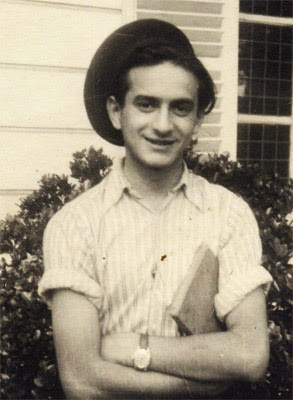
This is NOT a tattoo.
And I can prove it.
All we can see is a faintly darker area on an arm that looks like it could be a tattoo, and it is situated where an Auschwitz tattoo would be, but we can’t make out any definite shapes, let alone numbers. So how are we to tell? It is nothing but a tease.
If it were an Auschwitz tattoo, it might not be the number A7713. That would be a very good reason for Wiesel not to show it to the public – his entire story would be destroyed.
It’s also necessary to find the original photograph to discover if the gray mark is on the original – on the negative, say. At the USHMM website, I was shown only 3 pictures (all of which I have on this website) from my search of “Young Elie Wiesel,” and “Elie Wiesel in France.” Those three did not include this one. Why wouldn’t the USHMM, that owes it’s founding to Wiesel, want to have this picture in its collection? It cannot easily be found at Yad Vashem or the Auschwitz Museum websites, either. Why is Loupi Smith the only person who has come up with this controversial image?
I think this picture was taken in the summer of 1945, in France, since it matches another photo of young Wiesel identified by the USHMM as taken in France in 1945. If Wiesel just arrived from Buchenwald as a scrawny, starved, traumatized kid whose head was shaved clean only a few months before, as we see in the Barracks picture taken in April 1945 that he claimed in 1983 to be himself, then this photo of a healthy, well-fed, smiling boy with long hair doesn’t fit the EW narrative, does it? Is this why no one wants this picture to be circulated? I think that’s a very good explanation. Heidi, take note.
There is no official archive of photos of Elie Wiesel that documents his life. Why not? I think it’s because Elie can’t be pinned down – his story is fluid. Even details in his book Night, first published in 1960, were revised by his wife in 2006! As with this picture, some photos of Wiesel contradict the story he is telling, as well as some things he said in the past contradict what he is saying now — and even what he said then. That is why everything to do with Elie Wiesel is in such disarray. And that is why he will never answer questions except in a “pretend-mode” with friendly Jews who are willing to accept whatever he says, no questions asked.
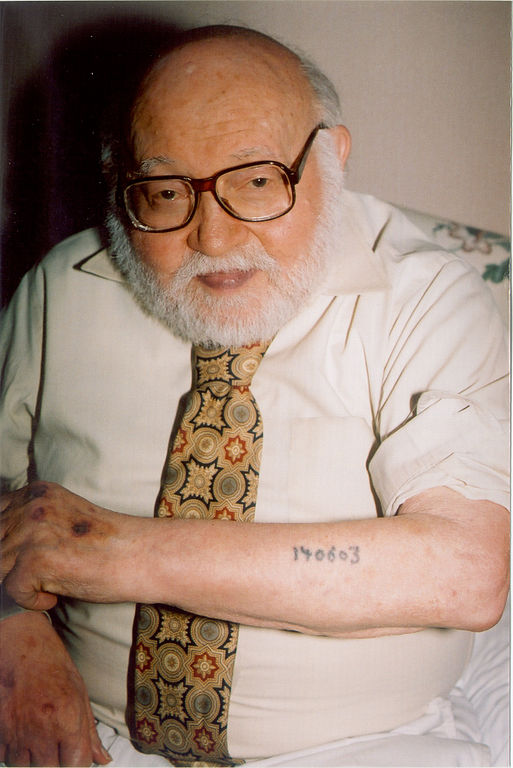
This IS a tattoo.
And this is the way pictures of Auschwitz-Birkenau survivors should be taken, with a face connected to the arm. With real tattoos, even when faded, they are recognizable as numbers.
And consider that this man, Sam Rosenzweig, appears to be the real deal, is quite old and yet his tattoo is easy to read. Yet Wiesel in the photo above is only a little over a year from the time he ostensibly received his tattoo, and what we see is very faint and unreadable.
Now here is a sure-fire way to prove it to yourself. To enlarge this page without losing sharpness, hold down the Ctrl key on the lower left of your keyboard and hit the plus (+) key on the upper right (next to Backspace; do not bother with Shift) several times until the page enlarges to where it won’t enlarge anymore (seven enlargements for me). Now you can see what these magnified “tattoos” on Wiesel are made of – a shadow or skin discoloration, or maybe a little dishonest smudging, either on the photo or on the arm. But it’s clear there are no distinct numbers. Just hit Ctrl and the minus (-) key to go back to your normal page resolution.

This is NOT a tattoo.
When enlarged in the way that I recommended above, it is perfectly clear that it is not. It also doesn’t go straight across on his arm like on the top picture. but goes downward just a bit.
So please don’t rush to accept suggestive images as proof of anything, without some further search. In other words, don’t be an easy mark, a gullible non-thinker. If you have an interest, for whatever reason, in pushing the holocaust story, then, sure, you will grab onto anything that comes along … like these photographs. And no questions asked. That’s what Elie Wiesel buffs love – they love people who don’t ask questions.
Friday, November 6th, 2015
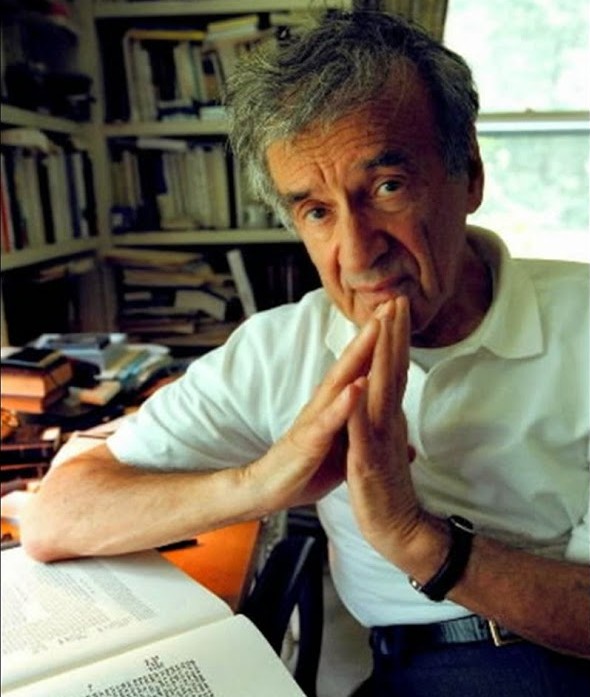
Image uploaded by Loupi Smith to convince people that Elie Wiesel has a tattoo on his left arm. But why is the picture cropped on the right?
I received a letter from “Heidi” and I was a little uncertain whether it was real or not. I have now decided that, unfortunately, it’s for real. But oh my, then we have another instance of a racial brethren who has fallen under the spell of the Elie Wiesel “Con.” Wiesel has an industry behind him that assures massive support for “his story” … or his version of history.
In all her good-hearted but overdone and misdirected sympathy for the sufferers of the world, Heidi becomes nothing more than a brainwashed tool, who is fooling no one but herself.
I wrote back calling her a “brainwashed Canadian,” which she took as an insult, mainly because to her way of thinking it separated us as Canadian and American – different – when in reality we have common ancestors. She may think that is bad, but it’s really much worse. Here is her letter to me; my commentary follows. And I would like to hear comments from the readers too. What do you think?
3 November 2015
Hi Carolyn,
I’m reading Wiesel’s book, Night, for the 2nd time, in French. I have never read it in English, as there were no English copies available at my library. I strongly encourage you to interview Wiesel about the questions you have. I believe he would be more than willing to be interviewed—I just can’t see him turning it down, unless if you were to attack or accuse him, I suppose…that would make anyone feel uncomfortable, you know? After all, he is human, and so are you, so I just don’t see how it couldn’t work. I would be curious to know what he had meant by the “silent/mute blue” he saw in the fire. To be honest, I was quite refreshed by his book that it’s the first time Nazis/SS are differentiated from the German people (I’ve read the comic book, Maus, by Art S, which never attacks Germans either) I think it would be important to ask him why he doesn’t hate Germans. I’m sure he’d be able to explain that question—I have my guesses, but I don’t know the real reason. I have a feeling he’d show you his left arm, if you were to ask him; I looked it up—apparently, it’s there—just faded: (now, you maybe won’t like me! :P )
https://plus.google.com/u/0/111151465916941421669/posts/ihdownSArMG?pid=…
I think that a major issue is that the world didn’t know just how bad things were in Germany after WW1. Things just got worse and worse. The poverty was very bad and traumatizing—a lot of men were killed as soldiers, often leaving behind poor widows with a ton of kids to feed. Certain German children did a lot of child labour, picking potatoes in their bare feet, just to eat. Unfortunately, there was no social aide, so anxiety and fear became a way of life for a lot of people. Of course, I wasn’t there, but I would never have wanted to be, as things just got worse and worse. Nonetheless, not all German kids were poverty-stricken if they were lucky enough to have been born into wealth. The problem was to actually find a job, with the economy being so bad. Good jobs simply couldn’t be found…
I think it’s worth a try to contact Wiesel.
Sincerely,
Heidi (last name withheld, but it’s German)
First, Elie Wiesel is 87. He hasn’t made a public appearance for a couple of years. Is our Heidi aware of that? Probably not.
Even when much younger, Wiesel only allowed interviews when very strict ground rules about what can be asked, and what not, were laid down in advance. It is rare, if not never, that he allows any interviewer, Jew or not, to ask him any non-softball questions. Is Heidi aware of that ? Probably not.
On this website, I have already attacked and accused Wiesel of many things, mainly pointing out the many lies he has told. He has made no attempt to answer any of it. Has Heidi read most of what is on this website? Surely not. She has read the sidebar with the Wiesel Quotes, and the title. She wants Wiesel to explain what he meant by the “silent, blue sky” at night – she’s sure he can. But Heidi, Wiesel didn’t write that he saw the blue sky in the fire, as you say, but that the fire was burning under the silent blue sky … at night. Please keep things straight — one thing I can’t tolerate is sloppiness when talking about Wiesel.
Heidi compares the Jewish book “Night” to the Jewish comic book, “Maus,” by Art Spiegelman, and admires them both because they “differentiate the SS/Nazis from the German people,” she thinks. But they don’t. Elie Wiesel has famously written, “”Every Jew, somewhere in his being, should set apart a zone of hate — healthy, virile hate — for what the German personifies and for what persists in the German. To do otherwise would be a betrayal of the dead.” He also thinks it is perfectly proper and even necessary for ordinary Germans, 70 years after the war ended, to continue to supply “survivors” and Israel with billions more euros … money these innocent Germans are taxed for. But Heidi doesn’t stop to think things through. If she would read more of Wiesel’s writings than just “Night,” she would learn far more about the real nature of the man. If she would read everything on this website, she would really learn about him.
Wiesel has also said that he will never knowingly be in the same room with a holocaust denier! He wants nothing at all to do with them. I am not only all German, but a holocaust denier. So how would he give me an interview?
Heidi makes a distinction between German and Nazi, but I do not. She will say, “Oh, no, not anti-German, but anti-Nazi.” In a second letter that I received from her she told me about her grandmother’s life in Germany right after the war and said of her family, “They weren’t Nazis.” I say, too bad, what were they then?

Same setting as feature photo – here we see more of his arm, but when enlarged it is nothing but a shadow.

Loupi doesn’t give a source for this photo. Where else can it be seen?
About Wiesel’s left arm, she sends me to the page put up by Loupi Smith, a notorious Jew who probably photoshopped the b/w picture of the young Wiesel (right). If you zoom in on it, nothing that looks anything like numbers shows up. And where was it taken? We have seen plenty of unretouched pictures of Wiesel’s arm where nothing is visible. As to the color photo of the older Wiesel (above) – I have for some time had this small b/w version (above left)* that shows more of his arm, and the darker smudge turns out to be nothing but a shadow. Absolutely – it is not a number. To prove Wiesel has a tattoo, Loupi has to do better than this. And so does Heidi. For instance, a quality magnified view that shows A7713, not just a smudge. Maybe a bit of cooperation from the tattooed person himself would help. Because all the evidence points to the fact that he took another man’s number for his own after the war. The evidence of his handwriting is also conclusive.
[*These two photos also show that a professional photographer was at work — these are not just casual shots of Elie reading in his office! They are staged.]
The world today (at least anyone who has any interest in it) does know how bad things were in Germany after WWI. That information has been widely disseminated. Most people have sympathy for the Germans of that time. But Heidi wants to equate the suffering of the Germans after WWI with the suffering of the Jews during WWII. Jews, however, and Elie Wiesel in particular, will never go along with that! Why doesn’t Heidi have anything to say about the even worse suffering of the Germans after WWII?
Heidi got even more carried away in her second letter:
My grandmother suffered terribly from the poverty in Germany after the 1st war—she was only a year old when her father died as a soldier in 1914, and her mother was left with many children to take of, all on her own, as NO social assistance was available at that time. My Oma had no shoes. She picked potatoes in her bare feet for Jews. You could never possibly understand such suffering, could you? Where were you during that time?
Where was I? Just like Heidi, I wasn’t yet born! How old does she think I am?
I advised Heidi to write to Elie herself and get her own interview — if she thinks it is possible that such a request would even get to him. She answered that she did intend to write to him at his Foundation, a kind of a fan letter, but she didn’t expect to receive a reply. She said:
My only intent would be to express the empathy I feel for all that he suffered. We are all humans, are we not? I believe that he wrote the book while experiencing dreadful pain of those horrible memories, done by war criminals, not the common German citizen of that time. He is very intelligent and well-educated—a special person to me, as he understands human suffering on a very deep level.
Heidi, in her high-mindedness is deeply ignorant. In the photo above right, probably taken in 1946, Wiesel looks mighty healthy and confident. He did not suffer; he made other people suffer. Those who ran the concentration camps were not “war criminals” and were not different from the common German citizens’ like her family, who she pointed out were “not Nazis.” And Wiesel was not well-educated – he was barely educated, except by an odd assortment of rabbis. His doctorate is “honorary.” So she strikes out all the way around. Our Heidi is just another brainwashed German who bows down to kiss the feet of the Jews, thinking that it will be appreciated and everything will be made right thereby. After all, we’re all humans, aren’t we? ~~
12 Comments
Category Featured | Tags: Tags: Auschwitz tattoos, Elie Wiesel, Night,
Social Networks: Facebook, Twitter, Google Bookmarks, del.icio.us, StumbleUpon, Digg, Reddit, Posterous.
Wednesday, July 8th, 2015
In the previous article posted here, a father tells of his effort to have Night by Elie Wiesel removed as required reading in the advanced Freshman English course at the school his children attend. He has suggested Alexander Solzhenitsyn’s writings as a good substitute, since the teacher of the course has said she wanted a story of someone interned in a prison camp.
Why a story of someone in a prison camp? For freshman (9th grade) students? When I was in school at this level, we were not assigned reading about prison camps. Of course, Elie Wiesel was unknown at that time. But this tells us that the reason for assigning Night to fourteen year olds in just about every school in the USA, Europe, Canada, Australia, and elsewhere all over the world, has nothing to do with the importance for adolescents to read stories about life in a prison camp, but only to do with Elie Wiesel being promoted and sustained by the “powers that be” to the unquestioned status of “Holocaust High Priest.”
The dawning understanding that High Priest Wiesel is a con-man whose story Night is a purely fictional account that he took from a book published in Yiddish in 1955 is causing people like our father to object to Wiesel’s false narrative being forced upon their children in a setting in which criticism of the book is not allowed, but respect for the authorities behind it is demanded. Since the teacher has justified her choice of Night by saying she wants her students to read about someone in a prison camp, I asked the readers of Elie Wiesel Cons The World to come up with some suggestions. And they did! Here is the list so far:
One Day in the Life of Ivan Denisovich by Alexander Solzhenitsyn (1962) Also see here
Boer Boy by Chris Schoeman (2011) About the British internment of Boers during the 2nd Anglo-Boar War.
Looking Like the Enemy: My Story of Imprisonment in Japanese-American Internment Camps by Mary Matsuda Gruenewald (2005)
Dancing Along the Deadline: The Andersonville Memoir of a Prisoner of the Confederacy by Ezra Hoyt Ripple (1996)
Boy 30529: A Memoir by Felix Weinberg (2014)
Left to Tell: Discovering God Amidst the Rwandan Holocaust by Immaculee Ilibagiza (2007) Comment: It was on my neighbor’s son’s summer reading list. He loved it, and he is going into 10th grade.
Three Came Home by Agnes Keith (1947) An excellent, truthful and thoughtful autobiography of Keith?s internment in Japanese Army prison camps located in Borneo, 1942-1945.
In my opinion, the best choice is Alexander Solzhenitsyn. The book is approximately 168 pages and is definitely a classic. Next choice would be Boy 30529, which is 192 pages, or Looking Like the Enemy, also 192 pages. I like Boer Boy, but it’s too long and more expensive. Night is only 120 pages, which is one reason for its popularity.
Saturday, June 6th, 2015
Dear Carolyn,
Since learning of you a few years ago I have learned a great deal.
Your work has been very instrumental in helping me to work on getting “Night” removed from the Freshman reading list in A.P. [advanced placement] English and Literature courses taught at the private high school where 3 of my 5 children are enrolled.
It has been a tough battle because in the midst of all that I was doing there was an administrative shake up due in part to one of the girls on the volleyball team being bullied.
Anyway, I have not let up in my pursuit of this mission. The original excuse given to me was that the teacher wanted a story about someone interned in a prison camp.* With so many great books why pick NIGHT? She could never give me a satisfactory answer. Not to cause a person to dig their heels in due to pride, I very delicately approached this issue from many avenues. BUT what has helped the MOST is your well documented articles on Elie Wiesel’s fraud. Of all the means available this has had the best response!!
There will be a meeting sometime this Summer. Do you have suggestions as to an alternate [book]? This is a Catholic school. I thought Alexander Solzhenitsyn would be good.
Anyway I’ve been very busy as of late and with some time today wanted to write and update you.
Best wishes always
Dr F.J. M____
* Strange the subject for a regular English and Literature course should be limited to a story line of a prison camp. That’s the first thing I would question with this teacher. But this is not unusual – it’s placed into the education objectives in so many districts because complete lesson plans have been pre-prepared by Jewish agencies for the book Night. The teacher is not required to know anything or even to read it. For this reason Night is the choice of almost all teachers. It’s a closed circle.

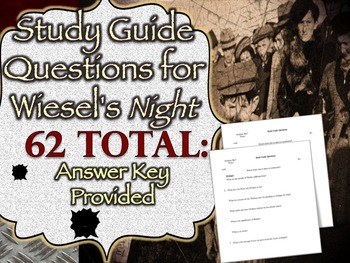
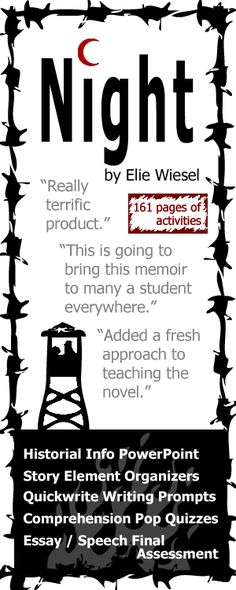
Alright readers, put some thought into this and send in your suggestions for an appropriate book for this father to suggest to his children’s school board.
One Day in the Life of Ivan Denisovich by Alexander Solzhenitsyn (1962), called a novella, is advanced but not too difficult for top high school students.
Crossing the Line by Paul Rassinier (1949), not as easy to get in English, is an account of the author’s experience in Buchenwald.
Do you know of a better one? Please send it in, and thanks.























